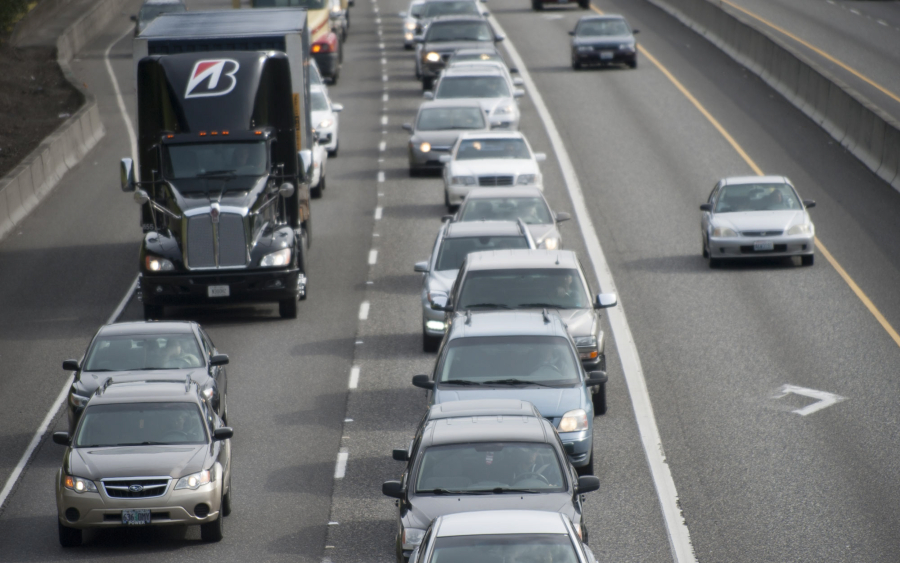Vancouver is just about in the middle of what one international transportation data firm says is the overall best route in the United States for the initial deployment of highly automated semitrucks.
“The most ideal U.S. corridor for initial deployment when normalizing freight volume, route length, congestion and incident rates is I-5 from the Canadian border to Northern California,” INRIX, a big data firm focused on transportation issues within cities, said in a news release. “This route scored the highest in our combined score due to its length and its high incident rate when compared to other low-congestion corridors.”
The company reached the conclusion in The INRIX Automated Freight Corridor Assessment, a report that looked at the potential of autonomous trucks on American highways.
“Big data is an essential tool that should be used as the public and private sectors explore and deploy HAVs,” Avery Ash, head of autonomous mobility at INRIX said in the release, using the acronym for highly automated vehicles. “Using data-driven insights will allow commercial truck operators and road authorities to proactively leverage HAVs to solve key mobility and business challenges.”
Autonomous vehicles have the potential to radically change the long-haul trucking industry. But the details of how, when and where they should be deployed are still uncertain. INRIX’s report seeks to suggest the best-suited locations for the initial rollout.
INRIX argues that the U.S., in general, is an especially promising country for the deployment of automated freight shipments. It points to the numerous long-distance truck routes, decreasing labor costs and the movement toward a regulatory framework at the federal level.
The report works off the idea that the benefits of highly automated vehicle technology is best used on long trips, so the firm focused on popular trucking corridors around the country that are more than 100 miles long.
It also assumed little to zero driver input over the identified corridors.
It also worked off the notion that the technology functions best in corridors without difficult traffic conditions such as speed fluctuations, congestion or collisions.
The northern I-5 corridor was No. 2 on the firm’s list for the possibility of high commercial returns if highly autonomous vehicles were deployed in the area, due to its exceptionally high shipping volumes and long stretches of low congestion over a 24-hour period.
But it fell short of the top spot, due to its areas of high congestion in a few key places.
The company argued that the technology could not only make shipping more economically viable, but it could make the roads safer as well.
INRIX argued that by combining truck drivers’ skills with autonomous vehicle technology, problematic corridors — those plagued by accidents, slowdowns, construction — could be substantially improved.
According to the Insurance Institute of Highway Safety, about 1 in 10 highway deaths involves trucks.
The I-5 corridor didn’t make the firm’s top-10 list of routes that would most benefit from safety improvements.
The company also claims that the technology could enable truckers to haul larger and or more trailers. Plus, companies could save money on parking fees because the need to stop semis could drop. Lastly, the technology could save money if applied to diesel engines, by optimizing fuel consumption, it says.
Because the U.S. trucking industry is plagued by labor shortages, which analysts expect to increase, automated vehicle technology could fill the gap, the company says.




